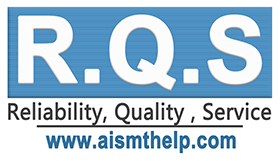About laser steel mesh
Specification and size selection of steel mesh:
1. According to the size selection of the physical plate, corresponding to the effective area of the selected steel mesh specification, if the double-sided patch needs to be coated with solder paste, it is calculated according to twice the area of the physical plate, then the area must be within the effective area of the selected steel mesh specification, (for example, the effective area of the 37cm*47cm mesh frame is only 19cm*29cm, and the size of the physical board is 11cm*22cm. It is appropriate to brush solder paste on one side, and if you brush solder paste on both sides, you need to replace the larger mesh specification.)
2: According to the applicable specifications of the printing machine, at present, some printing equipment is only applicable to one steel mesh specification, so please check with the processing factory before placing an order.
Application of steel mesh: solder paste or red glue. For those who understand the patch engineering, you can directly check the instructions behind the options. For those who do not know the customers, you can directly ask the processing factory. Simply and directly understand that you can choose the process according to the material you brush.

Mark point requirement: mark point is used for alignment between steel mesh and PCB.
1: Generally, if mark point is needed, it is usually mark point semi engraving type, which is mainly used by fully automatic printing machines, and others, such as semi-automatic or manual printing, are not used.
2: Mark point through holes are usually manually aligned. This alignment method can be directly replaced by the pad hole position, because if the mark position is opened, the tin will be brushed on it (mark point is not recommended to be tinned, and the alignment needs to be used for subsequent chip placement). Generally, it is not necessary. Therefore, what is generally needed is that the PCB is very precise, and when the machine cannot use the mark point for half an hour, the calibration degree is better and it is not easy to offset compared with the case where the mark point is relatively small and the pad is relatively large.
Polishing process: polishing and electrolytic polishing. If there are no precise components in general PCB, you can directly choose to polish it. Even if there are burrs on the hole wall, the proportion of tin content affected is very small. In addition, if it is precision components such as QFN and BGA, the impact is relatively large, and it is usually easy to lead to poor tin deposition. Because grinding and polishing can only deal with the burrs on the surface of the steel sheet, and the residual on the hole wall cannot be dealt with. At this time, electrolytic polishing can be selected to completely remove the burrs with acidic substances.
Selection of steel sheet thickness: it is most appropriate to directly ask the patch factory, because the adjustment is the same depending on the printing machine, so the effect is different depending on the machine.


